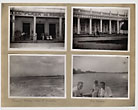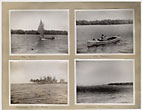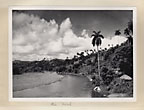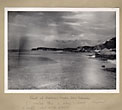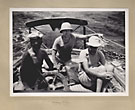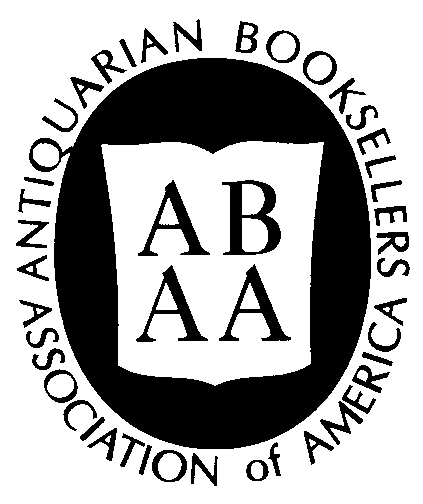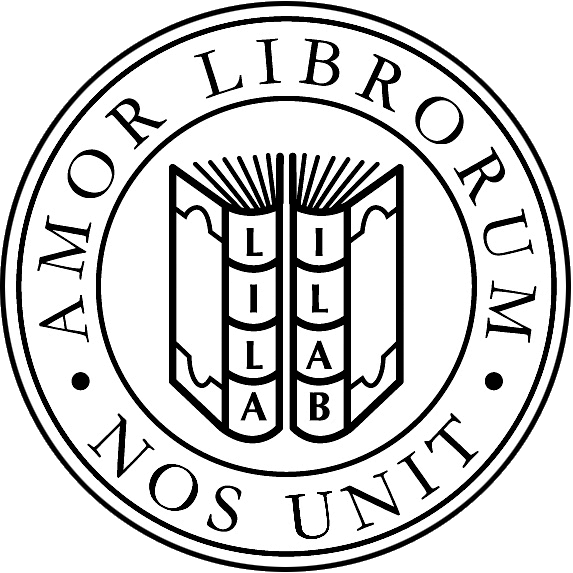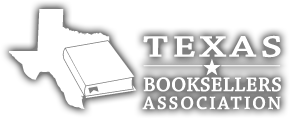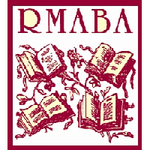Dealer in Rare and First-Edition Books: Western Americana; Mystery, Detective, and Espionage Fiction
Photograph Album Of 102 Original Photographs Documenting The Harvard Columbus Expedition, 1939
SAMUEL ELIOT MORISON
Other works by SAMUEL ELIOT MORISONPublication: Privately photographed and captioned, 1939, N P
First edition. Quarto. 11 1/2"x 9 3/4" binder with 25 clear plastic leaves, black and white photographs affixed on both sides of the 25 numbered and transparent leaves in a recent binder. Print sizes range from 2 1/4" x 2 1/4" to 6 1/2" x 9 1/2," with about half being 3 1/4" x 4 1/4" and the remainder divided equally between smaller and larger sizes. There are a few blank spots with captions, but no photographs. An additional 9 photographs of the ship Capitana are laid-in. The Harvard Columbus Expedition was a sailing expedition sponsored by Harvard University and led by acclaimed naval historian Samuel Eliot Morison (1887-1976) to follow Christopher Columbus' route from Spain to the New World. Morison had a long-standing interest in Columbus and wanted to determine how accurate the explorer's navigation was, and where exactly he had made landfall on his voyages. The expedition party included Morison's wife Elizabeth, John W. McElroy, Herbert F. Hossmer, Jr., Richard S. Colley, Dr. Clifton W. Anderson, Kenneth R. Spear and Richard Spear. Departing Connecticut in August 1939, they sailed on the 147-foot ketch Capitana for the Azores and Lisbon. From there they proceeded to retrace Columbus' route (based on his journals and log books) aboard the 45-foot ketch Mary Otis, reaching Trinidad (Cuba), by way of Cadiz, Madeira, and the Canary Islands. After following the coast of South and Central America, the expedition returned to Trinidad in December 1939, where they boarded a steamer for the return to New York. Morison's observations on the journey led him to conclude that Columbus was an exceptionally skilled navigator. Although the exact spot in the Americas where Columbus first went ashore remains a subject of scholarly debate, Morison believed he had conclusively proved that it was San Salvador (Bahamas). He also identified many of the other locations Columbus visited on the basis of the explorer's compass readings and descriptions of terrain, rivers, harbors, and other features. All of these findings were incorporated into Morrison's biography of Columbus, Admiral of the Ocean Sea, which was awarded the Pulitzer Prize in 1943. The 102 black and white images in this photograph album document the travels of the Mary Otis in the Caribbean, primarily in the Bahamas and Cuba. There are shots of shipboard life, the shorelines of many bays and harbors seen from the ship (Deadman's Sound, Long Bay, Graham's Harbor, Rum Cay, Bariay, Puerto Padre, Puerto Sama, and others), and landings in San Salvador and Gibara (Cuba)—including travel up the Gibara River inland to Holguin. Most images are captioned in pencil in Morison's hand, identifying locales and people, and also with an occasional reference to Columbus (e.g., Off beach near Baracoa where C.C. saw Indians). These are basically snapshots--clear but without attention to composition--but they provide exceptional first-hand documentation of a historic project that merged academic scholarship with adventure and allowed Morison to offer readers a uncommonly vivid account of Columbus and his voyages. Very good copy.
Inventory Number: 41710Sold -- Contact us



